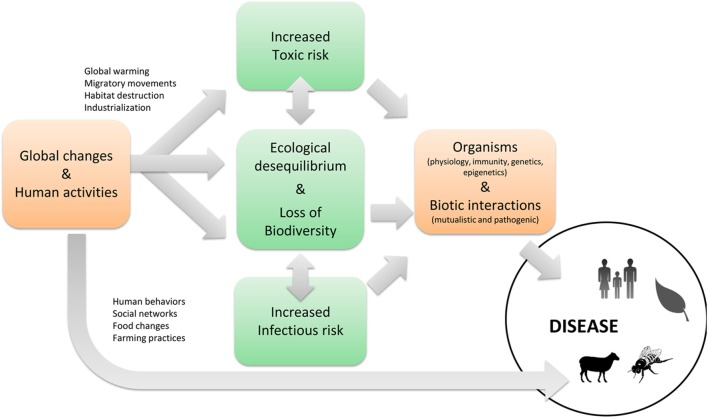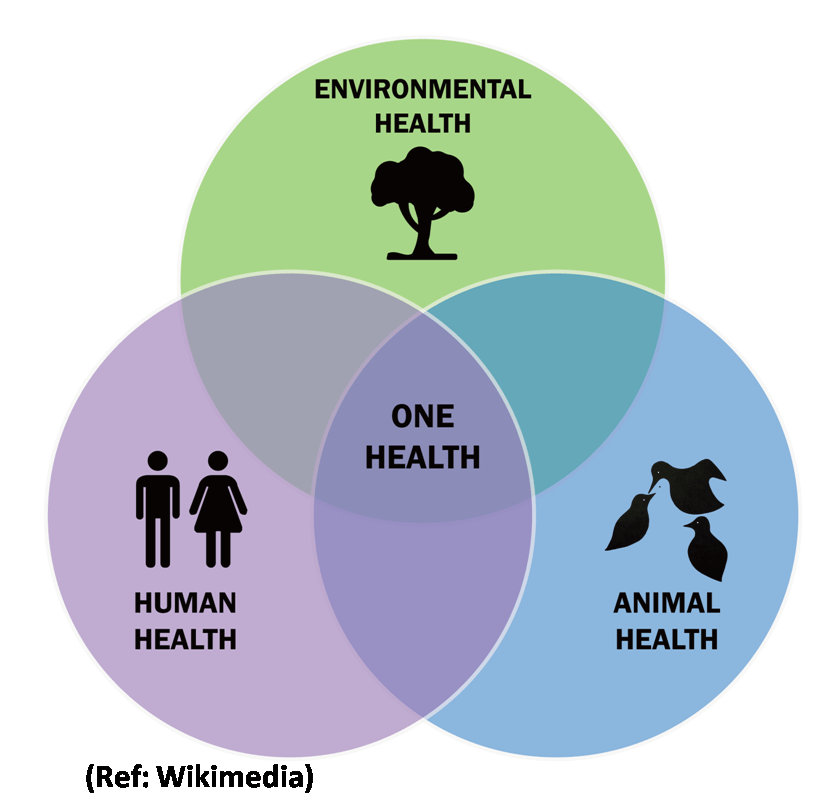Barathiraja S1, Mathivathani C2 and Sunil Kumar Mohapatra3*
1,3Department of Veterinary Biochemistry, Rajiv Gandhi Institute of Veterinary
Education and Research (RIVER), Kurumbapet, Puducherry – 605 009
2Department of Veterinary Parasitology, Rajiv Gandhi Institute of Veterinary
Education and Research (RIVER), Kurumbapet, Puducherry – 605 009
Introduction
The “One Health” concept was introduced at the beginning of the 2008. It is a strategic Framework for Reducing Risks of Infectious Diseases at the Animal–Human–Ecosystems Interface. As per the concept, human health and animal health are interdependent each other and bound to the health of the ecosystems in which they co-exist (i.e.) the health of people is closely connected to the health of animals and the shared environment. By promoting collaboration across all sectors, a One Health approach can achieve the best health outcomes for people, animals, and plants in a shared environment (OIE & CDC).
Significance
Human population is facing many types of challenges that require global solutions. One of the great issues is the emergence, re-emergence and spread of infectious diseases from animals and humans and vice versa. It is due to growing human population and increase in anthropogenic activities such as deforestation, encroachment of wildlife areas, rapid urbanization etc. Such activities alter the ecosystem conditions resulting in climate change and global warming which in turn affects the health of animals and also influence human health directly or indirectly in the globalized and interconnected world (OIE).
One world one Health
Changes in environmental conditions due to manmade activities will affect the disease prevalence in human population (Fig.1) (Destoumieux-Garzon, 2018). It has been reported that about 60% of existing human infectious diseases are Zoonotic and at least 75% of emerging infectious diseases of humans are of animal origin in nature. (Jones et al., 2008).

Fig.1: Ecological disturbances increase the risks of disease development
This one health perspective is important for inter-professional collaboration in the following aspects: Zoonoses, food safety, treatment resistant bioagents, pathogen sensitivity, vector distribution and survival, healthy drinking water and environmental pollution. The implementation of one health concept is important to improve the health of human and animals, to increase the animal production, to provide safety food, developing centre of excellence and increasing professional opportunities (Hristovski, 2010).

Fig.2: Importance of ‘one health and one world’ concept
Conclusion
The one health concept is a reality and necessarily to be followed in the community and all the disciplines should work together for the betterment of human life. There is a need of many strategies to be followed including planning and implementation of programmes and awareness of the community. There is a need of uniformity in human and veterinary medicine. We need to think of climate change and animal health due to anthropogenic activities because they are influencing the human life. So, preserve the ecosystem, protect the animals and preserve the human life.
References available on request…